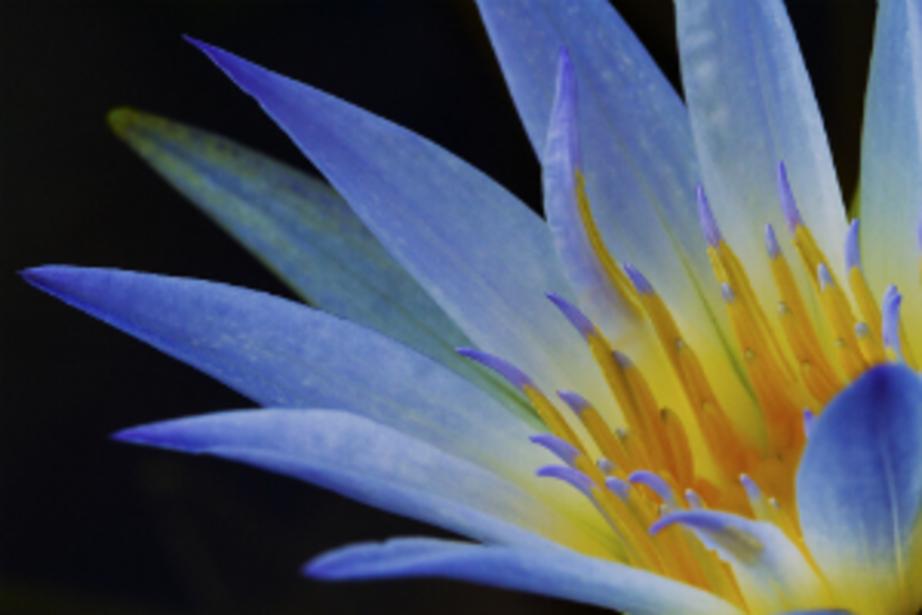Blue lotus flowers: the sacred way Egyptians got high
There is a mysterious image that has appeared time and again in thousands upon thousands of pieces of ancient Egyptian art. The blue lotus flower looks almost fan-like across many of the images found in tomb paintings, papyrus scrolls, sculptures, and even on headdresses.
For decades it remained a mystery – what did it mean? Why was it appearing in these scenes? It seems we finally have an answer. They were getting high.
Flowers of the Gods

Though technically waterlilies, the flowers, known as blue lotuses, were very important in ancient Egyptian society.
They had godly associations, thought to be where Ra, the Sun God, went during the night, before re-appearing in the day.
This is because the flowers are closed during the night, and open again every morning (bringing the sun with them).
The flowers also symbolize the god of perfume, Nefertem. It was thought that Nefertem brought the flowers to the Sun God Ra to ease the suffering of his aging body. But how could a simple flower have such restorative powers?
Where the Flower Appears
The mythical stories surrounding the flower and its powers are just the start of its prevalence in Egyptian culture. As mentioned before, it surfaced time and time again in paintings and carvings and Egyptologists noticed a link between the scenes. This flower was incredibly sacred and prized above all other plants in ancient Egyptian culture.
The people holding the flowers were often holding them close to their mouths and noses, and these scenes in which they were doing this were either spiritual scenes depicting rites of passage, or “party scenes” depicting dancing and drinking. It was these specific scenes, where the flowers were often shown wrapped around bottles of wine (something we’ll return to later) that gave researchers the biggest clue.
This was when the penny dropped – the flowers must have been having some kind of an effect on the minds of ancient Egyptians. If you read Homer’s The Odyssey (believed by scholars to be written around the end of the 8th century BC) you will find a passage about blue lotus flowers.
He describes how the flowers robbed Odysseus of any willpower, “Once tasted, no desire felt he to come with tidings back or seek his country more.” In other stories in which the flower appears, it seems to bring about a blissful sleep in those using it. Time and again these flowers seem to be lulling people into relaxed states, or even sleep.
The Flower’s Effects

It would appear from the art and the stories surrounding this mysterious plant all point towards it having strange effects on the human brain. It seems as though the Egyptian people believed that the plant had restorative or healing effects and that it caused a change in their state of mind.
Similar to a much weaker version of ecstasy, the lotus induces a state of relaxed inhibitions, leading users to be more talkative and comfortable.
Reportedly, it brings with it a pleasant warmth around the head and upper body. Users also note that it brings with it a sense of a higher psychic energy – a feeling of having the ability to utilize higher states. This also goes some way to explaining its use in important rites of passage, or other ceremonial scenarios. The Egyptians believed this sacred flower was bringing them closer to the gods.
Modern studies of the plant have revealed apomorphine in the bulbs of the flowers. Only recently has it been revealed that this chemical can be used to treat erectile dysfunction, with excellent results. This also explains its wide depiction in ancient Egyptian erotic paintings and carvings – always in the hand of one of the figures in the scene.
It has also been revealed that they can produce heavy intoxication when steeped in wine. This explains the bottles wrapped in the flowers painted into scenes. Over the course of three days or so, the wine’s chemical make-up is changed by the flowers brewing it. The wine is then drunk, and the benefits experienced!
Can We Party Like An Egyptian?
You can still buy these flowers online and steep them in wine as they did in ancient Egypt. Reports from people who have tried it seem to suggest that perhaps the Egyptians were perhaps a little faint of heart, and may have been overcome by the flowers a little more dramatically than people today are!
The next time you’re looking at a piece of ancient Egyptian art, keep an eye out for the little blue and white flowers, and smile at the thought of all those in the picture getting high!
This article was written by The Hearty Soul. The Hearty Soul is a rapidly growing community dedicated to helping you discover your most healthy, balanced, and natural life.
For full references please use source link below.

